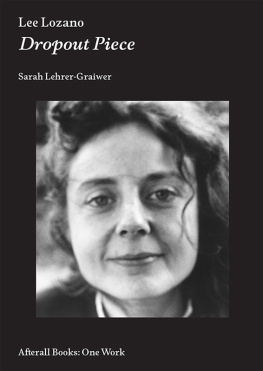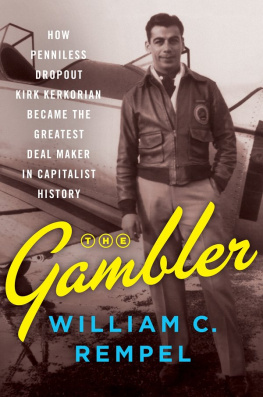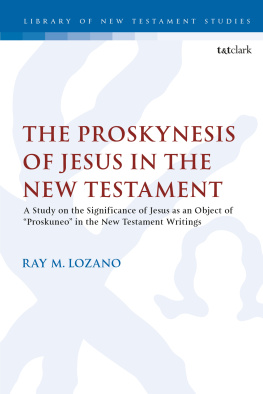Sarah Lehrer-Graiwer - Lee Lozano: Dropout piece
Here you can read online Sarah Lehrer-Graiwer - Lee Lozano: Dropout piece full text of the book (entire story) in english for free. Download pdf and epub, get meaning, cover and reviews about this ebook. year: 2014, publisher: The MIT Press, genre: Non-fiction. Description of the work, (preface) as well as reviews are available. Best literature library LitArk.com created for fans of good reading and offers a wide selection of genres:
Romance novel
Science fiction
Adventure
Detective
Science
History
Home and family
Prose
Art
Politics
Computer
Non-fiction
Religion
Business
Children
Humor
Choose a favorite category and find really read worthwhile books. Enjoy immersion in the world of imagination, feel the emotions of the characters or learn something new for yourself, make an fascinating discovery.
- Book:Lee Lozano: Dropout piece
- Author:
- Publisher:The MIT Press
- Genre:
- Year:2014
- Rating:3 / 5
- Favourites:Add to favourites
- Your mark:
- 60
- 1
- 2
- 3
- 4
- 5
Lee Lozano: Dropout piece: summary, description and annotation
We offer to read an annotation, description, summary or preface (depends on what the author of the book "Lee Lozano: Dropout piece" wrote himself). If you haven't found the necessary information about the book — write in the comments, we will try to find it.
An examination of Lee Lozanos greatest experiment in art and endurance a major work of art that might not exist at all.
Lee Lozano: Dropout piece — read online for free the complete book (whole text) full work
Below is the text of the book, divided by pages. System saving the place of the last page read, allows you to conveniently read the book "Lee Lozano: Dropout piece" online for free, without having to search again every time where you left off. Put a bookmark, and you can go to the page where you finished reading at any time.
Font size:
Interval:
Bookmark:
Contents

One Work is a unique series of books published by Afterall, based at Central Saint Martins in London. Each book presents a single work of art considered in detail by a single author. The focus of the series is on contemporary art and its aim is to provoke debate about significant moments in arts recent development.
Over the course of more than one hundred books, important works will be presented in a meticulous and generous manner by writers who believe passionately in the originality and significance of the works about which they have chosen to write. Each book contains a comprehensive and detailed formal description of the work, followed by a critical mapping of the aesthetic and cultural context in which it was made and has gone on to shape. The changing presentation and reception of the work throughout its existence is also discussed, and each writer stakes a claim on the influence their work has on the making and understanding of other works of art.
The books insist that a single contemporary work of art (in all of its different manifestations), through a unique and radical aesthetic articulation or invention, can affect our understanding of art in general. More than that, these books suggest that a single work of art can literally transform, however modestly, the way we look at and understand the world. In this sense the One Work series, while by no means exhaustive, will eventually become a veritable library of works of art that have made a difference.
First published in 2014
by Afterall Books
Afterall
Central Saint Martins
University of the Arts London
Granary Building
1 Granary Square
London N1C 4AA
www.afterall.org
Afterall, Central Saint Martins,
University of the Arts London,
the artists and the authors
eISBN: 9781846381355
eISBN: 9781846381362
eISBN: 9781846381379
Distribution by The MIT Press,
Cambridge, Massachusetts and London
www.mitpress.mit.edu
cover:
Lee Lozano, Halifax, 1971
The Lee Lozano Archive
All works by Lee Lozano and courtesy of The Estate of Lee Lozano and Hauser & Wirth

The first person to thank is Bruce Hainley, who turned me on to Lozano years ago, gave indispensible feedback throughout and continues to be the brightest light there is. I am grateful to Stephen Kaltenbach and Gerry Morehead for sharing of themselves so generously, which was in itself such moving encouragement. I thank Dan Graham for years of conversation; Dara Birnbaum, Billy Bryant Copley, Fred Gutzeit, Helen Herrick, Jerry Knaster, Mark Kramer, Paul McMahon, Turid Meeker, David Reed, John Torreano and Kes Zapkus for their memories and reflections; Barry Rosen and, especially, Jaap van Liere for permissions, access and assistance. Thanks also to Jeff Hassay and Jonah Lehrer for their fresh eyes. The editors would also like to thank The Estate of Lee Lozano for their generosity and support during the production of this book, and Sylvia Bandi and Hauser & Wirth for their patience and support in providing materials from the artists archive.
Sarah Lehrer-Graiwer is a writer who lives in Los Angeles. She has contributed to publications including Artforum, ArtReview, Art in America, Interview, LA Weekly and Mousse, and has written catalogue essays on artists such as Dawn Kasper, Friederich Kunath, Dianna Molzan, Scott Olson, Laura Owens and Rowan Wood. She curated the exhibition Joint Dialogue: Lee Lozano, Dan Graham, Steve Kaltenbach (2010) and authored its accompanying book (Overduin and Kite, 2012) on the relationship between the three artists. She is the editor of Pep Talk and runs the experimental art space The Finley Gallery. She currently teaches at Otis College of Art and Design and the University of Southern California.
In terms of actual Conceptual art, the major female figure in New York in the 1960s was Lee Lozano.
Lucy Lippard
Lee Lozanos legendary and legendarily elusive Dropout Piece, begun around 1970, may or may not be precisely equivalent to her dropping out of the New York art world. It is among Lozanos most challenging works and notorious, lasting achievements. Yet in many ways there is no piece to speak of, not in any conventional sense of an artwork we can exhibit and study, nor of a performance that took place as an event for an audience. If those who should be best acquainted with Lozanos body of work the artists estate, her former dealers Jaap van Liere and Barry Rosen question outright whether or not Dropout Piece exists at all, we must position our study in uncomfortably close relation to not knowing, continually asking ourselves what status the work occupies and how is it a piece. This ontological experiment is built into the work: through dropping out Lozano posed major problems of recognition. As much as this investigation will elucidate, we ought to preserve the fundamental quality of doubt in her thinking that produced Dropout Piece and was to be its desired effect.
We can begin by saying that Dropout Piece, first and foremost, is a title a concise fragment of language indicating, with the word piece, the application of arts frame around a certain zone of defiant, difficult and joyously (ce)rebellious thinking represented by the ambiguous but decisive compound dropout. Being a title, the piece functions as a verbal object to be considered in the literary context of the artists writings. Dropout Piece is the name Lozano gave to her wrenching transformation from insider to outsider, her declaration of willed marginality. She named her position to the world, or rather to the art world, as a designation of otherness and refusal, rejection and critical defection.
As a title, Dropout Piece takes material form only in a few notes the artist wrote to herself in a private notebook on 5 April 1970 (); but then again, the dropping out of the art world which the piece entails precluded that very possibility of exhibition. Formlessness followed function (or dysfunction) in order to enact content: Dropouts immateriality as art had to be consistent with the negation it enacted in life. As an uncommodified action, it couldnt be sold (and hasnt been yet), and thats a key part of its point.
Dropout Piece, then, is also a large-scale action Lozano carried out over a long period of time in the lived reality of her life that dictated making small-scale decisions on a daily basis, with lifelong, indeed posthumous consequences. Today, Dropout Piece is a screen for invisibility, a kind of ghost. It haunts as anecdote, oral history, ephemera and fantasy, which is to say, as speculative information and impressions passed on by individuals trying to piece history together subjective as, to use Lozanos term, infofiction. Without formal documentation and not dealing in images, Dropout must exist verbally and discursively, if it continues to exist at all. An underlying purpose of writing about it, then, is to ensure its survival.

Lozanos dropping out of the New York art world, which coincides with but may not be entirely equal to Dropout Piece, cannot be pinned down definitively in the historical record. Preferring to agitate chronology, the artist did not give
Next pageFont size:
Interval:
Bookmark:
Similar books «Lee Lozano: Dropout piece»
Look at similar books to Lee Lozano: Dropout piece. We have selected literature similar in name and meaning in the hope of providing readers with more options to find new, interesting, not yet read works.
Discussion, reviews of the book Lee Lozano: Dropout piece and just readers' own opinions. Leave your comments, write what you think about the work, its meaning or the main characters. Specify what exactly you liked and what you didn't like, and why you think so.








